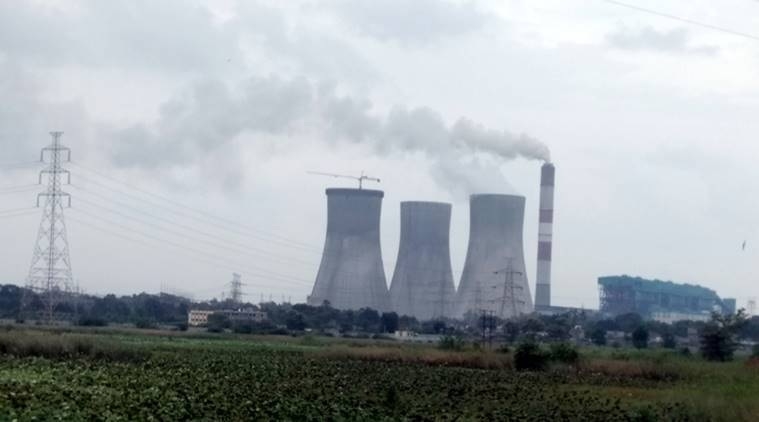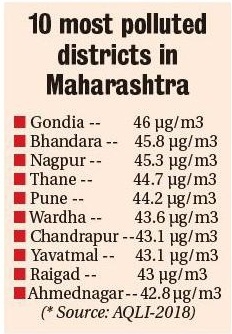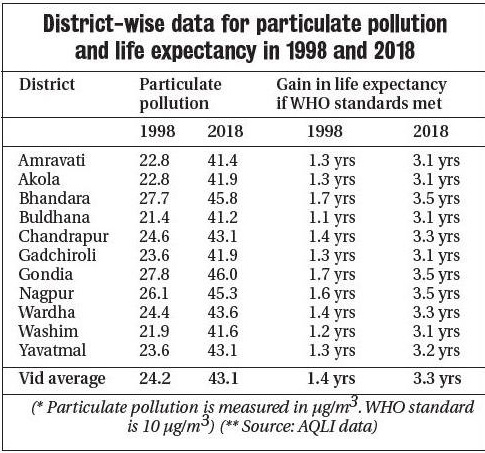Vidarbha registers 78% increase in particulate pollution in two decades
| Date :03-Aug-2020 |

By Kartik Lokhande :
Meeting WHO standards can increase Vidarbha’s life expectancy by 3.3 yrs, indicates AQLI report Six out of 10 most polluted districts of Maharashtra are from Vidarbha
The latest Air Quality Life Index (AQLI) report based on analysis of data for the year 2018, reveals that Particulate Matter (PM) pollution has affected life expectancy across the country, Maharashtra, and Vidarbha. The data reveals that particulate pollution has increased by a whopping 78 per cent in Vidarbha in two decades. Against this backdrop, the report indicates that if World Health Organisation (WHO) standard for particulate pollution are met, life expectancy of people of Vidarbha can increase by average 3.3 years.

The latest AQLI report points out that if India is successful in reducing air pollution to comply with the WHO’s air quality standard of PM pollution at 10 µg/m3, people in the country could live 5.2 years longer on an average. Similarly, for Maharashtra, life expectancy of people can increase by 3.1 years if WHO standards are met. Coming to Vidarbha region, life expectancy can increase by 3.3 years on an average if WHO standards are met. As far as air pollution is concerned, the situation has worsened in 20-year span from 1998 to 2018. As per the data, in 1998, average PM pollution in Vidarbha was 24.2 µg/m3. In 2018, it has increased to a whopping 43.1 µg/m3, which is over 78 per cent increase.

Given the WHO standard of 10 µg/m3, average PM pollution in Vidarbha is more than four times. In case of all the districts of Vidarbha, there has been increase in this span of 20 years. Surprisingly, the highest increase in PM pollution has been witnessed in Buldhana district (92.52 per cent), followed by Washim (89.95 per cent), and Akola (83.77 per cent). The lowest increase has been reported in Bhandara district (65.34 per cent) followed by Gondia district (65.46 per cent). During this 20-year period, PM pollution at national level increased by around 42 per cent, and Maharashtra recorded near-double rise. Thus, compared to national average, increase in PM pollution in Vidarbha is indeed a cause of concern. However, Vidarbha is better placed if compared to average for Maharashtra in the 20-year period. Still, going deeper into the report reveals one more interesting aspect. Though Vidarbha is better placed in comparison to Maharashtra, AQLI data for the year 2018 reveals that six out of 10 most polluted districts in the State are from Vidarbha region.
This, again, is a cause of concern. For, Vidarbha has 11 districts and six of them figure in top 10 most polluted areas. As far as Nagpur district is concerned, PM pollution was 26.1 µg/m3 in 1998. In 2018, it increased to 45.3 µg/m3, which indicated increase by 73.56 per cent, that is, above national average. If Nagpur meets WHO standard of 10 µg/m3 PM pollution, life expectancy of people can increase by 3.5 years. AQLI database produced by Energy Policy Institute at the University of Chicago (EPIC) quantifies ‘causal relationship between human exposure to air pollution and reduced life expectancy’. PM pollution is widely believed to be the ‘deadliest form of air pollution’.
PM2.5 refers to particulate matter in the atmosphere with a diameter of less than 2.5 micrometers, which is about 3 per cent of the diameter of a human hair. “Though the threat of coronavirus is grave and deserves every bit of the attention it is receiving, perhaps more in some places; embracing the seriousness of air pollution with a similar vigour would allow billions of people around the world to lead longer and healthier lives,” said Michael Greenstone, the Milton Friedman Distinguished Service Professor in Economics and creator of the AQLI, along with colleagues at the EPIC.